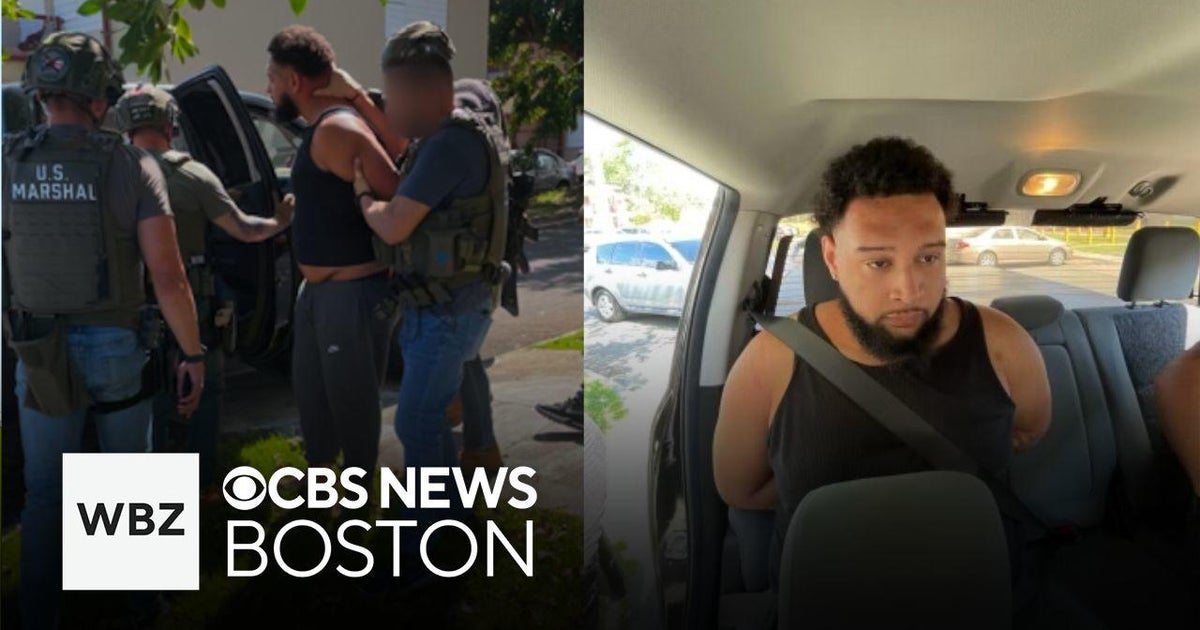Connecticut
Connecticut study highlights pregnancy-related deaths, domestic violence link

Roughly a third of pregnancy-associated deaths in Connecticut involved individuals who had experienced intimate partner violence at some point during their lives, according to a study released Wednesday by the Connecticut Coalition Against Domestic Violence that sheds new light on missed opportunities for intervention.
The first-of-its-kind analysis of Connecticut maternal mortality data from 2015 to 2021 determined that among the 102 deaths that occurred during pregnancy or within one year after the end of pregnancy, 33 of the deceased had experienced intimate partner violence or IPV.
Of those who died, eight endured abuse during pregnancy, nine encountered the abuse postpartum, and five faced abuse during both periods — yet the CCADV found that only one of these 22 individuals was referred to domestic violence services, despite the fact that 64% of the women screened positive for IPV in health care settings, some as many as five times.
CCADV Director of Health Professional Outreach Ashley Starr Frechette called the pattern of missed opportunities “alarming.”
“The research is clear that this is a key point of intervention which Connecticut simply cannot afford to miss,” she said.
The data highlights concrete disparities in maternal mortality rates: Mothers who reported experiencing IPV during pregnancy make up just 1.1% of births, according 2017 to 2021 data from the Connecticut Department of Public Health, but the CCADV report revealed that this same demographic accounted for nearly 13% of pregnancy related deaths between 2015 and 2021.
CCADV CEO Meghan Scanlon said the true number of perinatal IPV cases could be even higher, cautioning that the data captures confirmed cases only.
“I think there are people that could have absolutely been missed in this study,” Scanlon said. “This is just a snapshot of what is potentially happening in our communities.”
“When you’re in the thick of being pregnant or postpartum, you’re in a really vulnerable position in your life,” Scanlon added. “We see this as a report that just sort of begins to scratch the surface of the work that we could potentially be doing across the state with different service systems in order to reduce maternal mortality as it relates to intimate partner violence.”
In Connecticut, IPV screenings are not required, leaving the decision of whether or not to screen for abuse up to the practitioner.
Among the 33 individuals who died during pregnancy or in the postpartum period and experienced IPV during at least one point of their lives, the CCADV found that 58% received an IPV screening from an obstetric provider, 53% received a screening from emergency providers, and just 38% received a screening during their labor and delivery hospitalization.
The report called the frequency of missed intervention “One of the most disturbing findings from the analysis.”
Scanlon said that CCDAV worked with the Connecticut Hospital Association to develop a bill that would have required each of the state’s birthing hospitals to provide each pregnant and postpartum patient with educational materials on IPV resources. The proposal unanimously passed the House but died in the Senate during the final hours of the legislative session.
“We will be looking to reintroduce that,” Scanlon said. “There are so many different instances where individuals are touching our various service systems and maybe not necessarily getting what they need. … Anytime that we can get education into the hands of people, regardless of if they are experiencing this issue directly or if they know somebody that is, I feel like that is an incredible win because it’s empowering somebody to either help themselves or help another person.”
Scanlon said the disconnect driving a lack of screenings and referrals is due in part to a division in how domestic violence is perceived.
“The general public including all different sectors, from health care to private and government sectors … really does view domestic violence, intimate partner violence, family violence as a criminal justice-heavy issue. And we as a movement would disagree. We actually do see it as more of a public health crisis,” Scanlon said, noting that statewide, the CCADV system serves 40,000 individuals each year.
“It impacts not just the health and wellbeing of the individual experiencing the abuse or the trauma, but it impacts their children … work … school education systems. When you take a step back, (you) see how many different ways it impacts our communities.”
Bridging that gap is an ongoing effort. Scanlon said the CCADV has partnered with Women’s Health Connecticut and several other practices through the Purple Ribbon Project, which provides domestic violence certification training to health care staff and emphasizes consistent screening and education.
Scanlon said the most important part of her work “is reducing and hopefully preventing a person from experiencing a fatality from intimate partner violence.”
Of the 22 decedents who experienced IPV in the pre or postpartum period, three died during pregnancy, one died by homicide, five were murdered by a current or previous intimate partner, two took their own lives, nine overdosed. Others died of natural causes or motor vehicle accidents, according to the report.
The CCDAV study found that case narratives often involved red flags or indicators for IPV such as “abdominal pain, decreased fetal movement, periorbital hematoma, back pain, ruptured uterus, and facial pain in the context of repeated emergency department visits for concerns such as slipping in the shower, falling down the stairs, or accidentally hitting the pregnant belly.”
The report said among pregnant women IPV has also been associated with high blood pressure, vaginal bleeding, late or insufficient prenatal care, late miscarriages, stillbirths, premature births, inadequate weight gain and nutrition, substance use disorders and mental health conditions.
Help for domestic violence victims in Connecticut is available 24 hours a day, 7 days a week by visiting www.CTSafeConnect.org or by texting or calling 888-774-2900.
The National Domestic Violence Hotline is 800-799-7233.

Connecticut
Public Middle School In Fairfield Among Top 5 In CT: New Report

Roger Ludlowe Middle School in Fairfield is the fifth-best in the state, and is credited with having a 10:1 student/teacher ratio; 72 percent proficiency in math; and 80 percent proficiency in reading.
U.S. News ranks schools based on “their performance on state-required tests, graduation, and how well they prepare their students for high school.” Click here to read the publication’s methodology.
Roger Ludlowe joins five public elementary schools in Fairfield to be ranked by U.S. News among the state’s best.
The best public middle school in Connecticut is House of Arts Letters and Science Academy in New Britain. Rounding out the top five are Eastern Middle School in Riverside (#2); Saxe Middle School in New Canaan (#3); and Middlebrook School in Wilton (#4).
U.S. News studied publicly available data from the U.S. Department of Education for its ranking, and analyzed 59,128 middle schools throughout the country for the report.
For more information on U.S. News & World Report’s ranking of top public middle schools, click here.
Connecticut
Connecticut couple arrested for $1 million Lululemon theft spree across multiple states | The Express Tribune

A Connecticut couple allegedly stole nearly $1 million worth of Lululemon merchandise during a two-month, multi-state theft spree, according to authorities.
Jadion Richards, 44, and Akwele Lawes-Richards, 45, were arrested on November 14 for stealing high-end fitness apparel from stores in Minnesota, Utah, Colorado, New York, and Connecticut since September, as detailed in a criminal complaint reported by multiple outlets.
The theft spree was uncovered after Lululemon investigators noticed significant losses, which escalated when the pair triggered a security alarm while leaving a store in Woodbury, Minnesota.
Richards reportedly accused store employees of racially profiling him, the complaint stated. However, a company investigator alleged the couple had stolen at least 45 items worth $5,000 from various stores the previous day.
Police apprehended the pair and discovered multiple credit and debit cards, along with a key to a Marriott hotel room. Inside the room, officers found 12 suitcases, three of which contained approximately $50,000 worth of Lululemon merchandise, as per the complaint.
The company investigator estimated the total stolen merchandise could be worth up to $1 million, though the complaint did not detail how this estimate was calculated.
Lululemon merchandise is known for its high price points, with clothing starting at over $50 and sweatshirts often costing more than $130.
“This outcome continues to underscore our ongoing collaboration with law enforcement and our investments in advanced technology, team training and investigative capabilities to combat retail crime and hold offenders accountable,” Lululemon’s vice president of asset protection told NBC News.
“We remain dedicated to continuing these efforts to address and prevent this industry-wide issue.”
The couple allegedly used various tactics to commit the thefts, including one distracting store staff while the other hid the fitness apparel under their clothes and jackets, according to the complaint.
Connecticut
Connecticut man arrested in Puerto Rico for allegedly killing 4-month-old and Massachusetts mother

Watch CBS News
Be the first to know
Get browser notifications for breaking news, live events, and exclusive reporting.
-

 Business1 week ago
Business1 week agoColumn: Molly White's message for journalists going freelance — be ready for the pitfalls
-

 Science5 days ago
Science5 days agoTrump nominates Dr. Oz to head Medicare and Medicaid and help take on 'illness industrial complex'
-

 Politics7 days ago
Politics7 days agoTrump taps FCC member Brendan Carr to lead agency: 'Warrior for Free Speech'
-
/cdn.vox-cdn.com/uploads/chorus_asset/file/25739950/247386_Elon_Musk_Open_AI_CVirginia.jpg)
/cdn.vox-cdn.com/uploads/chorus_asset/file/25739950/247386_Elon_Musk_Open_AI_CVirginia.jpg) Technology6 days ago
Technology6 days agoInside Elon Musk’s messy breakup with OpenAI
-

 Lifestyle7 days ago
Lifestyle7 days agoSome in the U.S. farm industry are alarmed by Trump's embrace of RFK Jr. and tariffs
-

 World7 days ago
World7 days agoProtesters in Slovakia rally against Robert Fico’s populist government
-

 News6 days ago
News6 days agoThey disagree about a lot, but these singers figure out how to stay in harmony
-

 News7 days ago
News7 days agoGaetz-gate: Navigating the President-elect's most baffling Cabinet pick


















